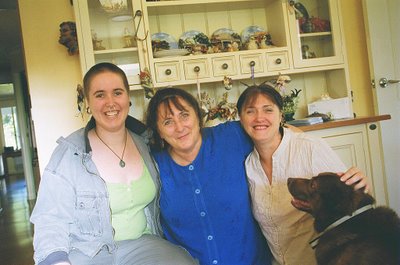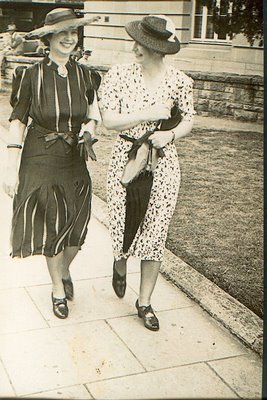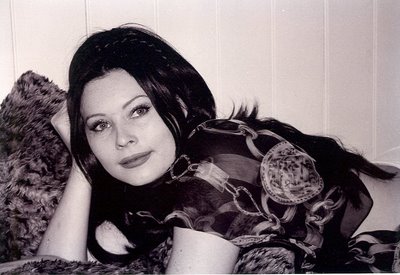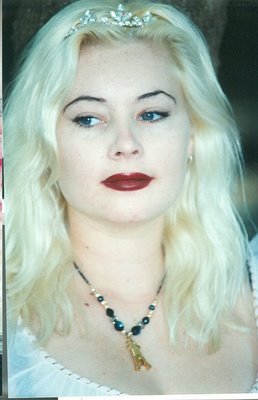In response to a post by Edy re some nightmares she has been having...it occurred to me it might be a form of Sleep Paralysis.
Edy have you ever experienced "Sleep Paralysis" Look it up or rather I'll post some here. What you experienced sounds like that. It often runs in families, and or comes at times of great stress... I have experienced it about 6 times in my life, our daughter a couple and a nephew also the same.
It is absolutely terrifying. Have a read of what is below and you might recognise it or maybe yours is different. Sleep Paralysis feels so evil and as if you are going to die. They do not really know what causes it, but Blake painted it I believe...
If this is what it is it passes and you don't die of it, but it is deathly terrifying if you don't know. Pray or whatever... I hope to God never ever to experience it again.
But take heart it does not hurt you and as long as you calmly think or pray in your mind to pass through this, and make an effort to move your fingers, or roll your eyes and it seems to help you come out of it. I am sure that if this is what you have, it is to do with the extrreme stress you have been under, the poison you have had to take into your body with Chemotherapy, and perhaps there is stuff out there we don't understand too...but it won't hurt you okay
Actually I will put this on my blog as others may have experienced it. Don just told me he has also had a few episodes...so maybe more common than we realise. Maybe people just don't talk about it.
Have a look at the painting by Henery Fuseli "The Nightmare" and see if this figure resembles yours Edy.
Sleep paralysis
From Wikipedia, the free encyclopedia
Jump to:
navigation,
searchSleep paralysis is a condition characterized by
paralysis of the body shortly after waking up (known as
hypnopompic paralysis) or, less often, shortly before falling asleep (known as
hypnagogic paralysis). Physiologically, it is closely related to the normal paralysis that occurs during
REM sleep, also known as
REM atonia.
The Nightmare, by
Henry Fuseli (
1781) is thought to be one of the classic depictions of sleep paralysis perceived as a
demonic visitation.
Sleep paralysis occurs when the brain is awakened from an REM state into essentially a normal fully awake state, but the bodily paralysis is still occurring. This causes the person to be fully aware, but unable to move. In addition, this state is usually accompanied by certain specific kinds of hallucinations. This state usually lasts no more than two minutes before a person is able to either return to full REM sleep or to become fully awake, though the sense of how much time has gone by is often distorted during sleep paralysis. People who are fortunate enough to be facing a clock while having an episode may often be surprised to see how little time has gone by during an episode that seems to last a very long time.
More often than not, sleep paralysis is believed by the person affected by it to be no more than a dream. This is the reason why there are many dream recountings which describe the person lying frozen and unable to move. The hallucinatory element to sleep paralysis makes it even more likely that someone will interpret the experience as simply a dream, as one might see completely fanciful objects in a room alongside the normal vision one can see.
Contents[
hide]
1 Accompanying hallucinations2 Possible causes3 Cultural references4 Treatment in literature5 See also6 References7 External links//
[
edit]
Accompanying hallucinations
Many report
hallucinations during episodes of sleep paralysis. The features of these hallucinations generally vary by individual, but some are more common to the experience than others:
Most common
Vividness
Fear
Common
Sensing a "presence" (often malevolent)
Pressure/weight on body (especially the chest). See for example the painting in the beginning of this article.
A sensation of not being able to breathe or move
Impending sense of doom/death
Fairly common
Auditory hallucinations (often footsteps or indistinct voices, or pulsing noises). Auditory hallucinations which are described as noise instead of hallucinations of legible sounds, are often described to be similar to auditory hallucinations caused by
Nitrous Oxide by persons who have experienced both.
Visual hallucinations such as lights, people or shadows walking around the room
Less common
Floating sensation (sometimes associated with
out-of-body experiences)
Seemingly seamless transition into full hallucinations or dreaming, also associated with out-of-body experiences
Tactile hallucinations (such as a hand touching or grabbing)
Rare
Falling sensation
Vibration
Involuntary movements (sometimes the feeling of sliding off of the bed or even up walls).
[
edit]
Possible causes
Little is known about the physiology of sleep paralysis. However, some have suggested that it may be linked to post-
synaptic inhibition of
motor neurons in the
pons region of the
brain. In particular, low levels of
melatonin may stop the depolarisation current in the nerves, which prevents the stimulation of the muscles.
There is also a significant positive correlation between those experiencing this disorder frequently and those suffering from
narcolepsy. However, various studies suggest that many or most people will experience sleep paralysis at least once or twice in their lives.
Some report that various factors increase the likelihood of both paralysis and hallucinations. These include:
Sleeping in a
supine position (facing upwards)
Irregular sleeping schedules; naps, sleeping in, sleep deprivation
Increased stress
Sudden environmental/lifestyle changes
A
lucid dream that immediately precedes the episode
[
edit]
Cultural references
In
India, there are two thoughts about sleep paralysis. One of the signs of approaching
enlightenment is "witnessing sleep," that is to say, being seemingly lucid in sleep — such as with sleep paralysis. It was also believed within the movement that
rakshasas (
Hindu demons) may assail those making strides towards their own enlightenment and the good of all mankind. The other thought is a female entity, called
Mohini (a demoness from the underworld), comes into the night-time world by means of ascending through a deep well. She is enchantingly beautiful, yet simultaneously horrific, unearthly, and deadly. Like her British Isles counterparts, she also seeks a male lover and human genetic material, presumably for the purpose of bearing a hybrid demon/human child.
In
Japan, sleep paralysis is referred to as kanashibari (金縛り, literally: "bound or fastened in metal": kana: metal, shibaru: to bind, tie, fasten")
In
Newfoundland, as a visit from the "old hag" (Ag Rog)
In
Mexico, as subida del muerto (the dead getting on top)
In
Turkish, as karabasan (black buster) and in
Hazaragi, as Syahi Zer Kado (pressing ink)
In the
Southern United States, people have described it as "The witch riding your back"
In
Korea, it is referred as Gawinullim, literally in english: "To be pressed by Gawi." The meaning of Gawi is unclear but generally known to mean "spirits" or "demons." The word "Gawi" in Korean is a
homonym which also means "scissors," which creates confusion for the accurate meaning of the word.
In
Indonesia, Javanese peoples called it "nindih" (To be seated upon)
In
Philippines, Sleep paralysis is often associated with Bangungot.
In
Vietnam, sleep paralysis is known as "ma đè", meaning a ghost or spirit laying on top of or pressing down on the person.
The common belief in
China is that a
spirit or
ghost is sitting or lying on top of the individual while they were sleeping, causing the sleep paralysis. This is thought to be a minor body
possession by the forces from the dead, and usually doesn't cause any harm to the victim.
In
medieval times of
Europe, attacks of sufferers of sleep paralysis may have given rise to the belief in
mara,
incubi,
succubi, other
demons and
witchcraft.
In traditional
Russian belief symptoms reminiscent of sleep paralysis were attributed to the anger of
domovoi, the home spirit, punishing people for bad husbandship or betrayal.
Some scientists believe that many supposed occurrences of
alien abduction, out-of-body travel, and other seemingly paranormal events may actually be due to misinterpreting the sensory effects of sleep paralysis.
Others have argued that sleep paralysis might be the point of separation of the "dream body" from the physical body and out-of-body travel then begins.
[
edit]
Treatment in literature
There is a particularly fascinating account of sleep paralysis in
Herman Melville's novel
Moby-Dick. Chapter 4 (The Counterpane) is an account of Ishmael's meditation on an episode of sleep paralysis in the middle of which he could not distinguish the difference between
Queequeg's arm and the quilt. Indeed, he could not even distinguish the difference between his own body and his surroundings. He then recalls an earlier episode of sleep paralysis from his childhood, which he determines was the precise moment he discovered the feeling of "otherness" of his own body with respect to his surroundings.
[
edit]
See also
SleepREM sleepHypnagogia[
edit]
References
Bower, Bruce (July 9, 2005).
"Night of the Crusher". Science News.
[
edit]
External links
Sleep Paralysis Information ServiceSusan Blackmore on sleep paralysisThe Skeptic's Dictionary entry on Sleep ParalysisSleep paralysis at Here Be Dreams
Sleep information and links from Stanford University
Sleep Paralysis and Associated Hypnagogic and Hypnopompic Experiences from Waterloo University
Abduction by Aliens or Sleep Paralysis? - Skeptical Inquirer magazine, May/June 1998
 vco comes home. How could they send home a wooden crate containing some other poor bugger from another country, and mistake that fro the metal crate/coffin used to return our dead? Like when did they not notice the fdifference between wood and metal. Curiouser and curiouser. What really happened to Private Kovco? All Australiana would be hoping that the relatives can have a private autopsy because something stinks to high heaven and the authorities know, we know they know and they know we know they know but are pretending all is sweet.
vco comes home. How could they send home a wooden crate containing some other poor bugger from another country, and mistake that fro the metal crate/coffin used to return our dead? Like when did they not notice the fdifference between wood and metal. Curiouser and curiouser. What really happened to Private Kovco? All Australiana would be hoping that the relatives can have a private autopsy because something stinks to high heaven and the authorities know, we know they know and they know we know they know but are pretending all is sweet. 


































